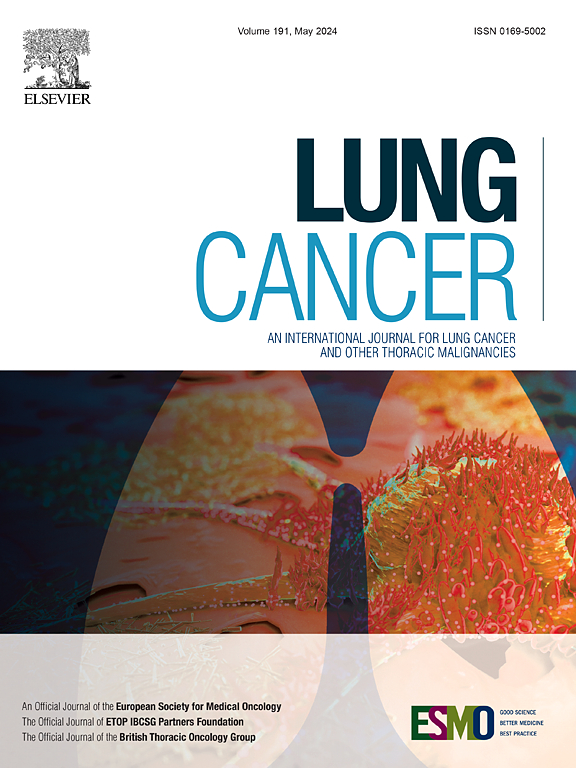Health-related quality of life and symptoms in patients with previously untreated, locally advanced or metastatic non-squamous non-small cell lung cancer treated with sintilimab or placebo plus pemetrexed and platinum (ORIENT-11): A randomized, double-blind, phase 3 trial
IF 4.5
2区 医学
Q1 ONCOLOGY
引用次数: 0
Abstract
Background
In the phase 3 ORIENT-11 study, sintilimab plus pemetrexed-platinum provided statistically significant longer overall survival and progression-free survival versus placebo plus pemetrexed-platinum as first-line treatment in patients with locally advanced or metastatic non-squamous non-small cell lung cancer (NSCLC). Here, we report the patient-reported outcomes (PRO) analysis findings in ORIENT-11.
Methods
PROs were measured using the European Organization for Research and Treatment of Cancer Quality of Life of Cancer Patients Questionnaire Core 30 items (EORTC QLQ-C30) and the Lung Cancer Symptom Scale (LCSS) questionnaire. PRO endpoints included evaluation of least square (LS) mean changes from baseline to week 12 (platinum-containing treatment) and week 21 (maintenance treatment), time to true deterioration (TTD), and overall improvement or stability rate for QLQ-C30 and LCSS scales. PRO scores in two groups were compared using the Mann–Whitney test. Least squares (LS) mean changes from baseline to week 12, week 21, and other time points were assessed with mixed-effect model repeated measures analysis. TTD was calculated using the Kaplan-Meier method and compared with the Cox proportional hazards model between groups.
Results
252 (94.7 %) patients in the sintilimab-combination group and 123 (93.9 %) patients in the placebo-combination group had a baseline and at least one postbaseline PRO assessment. Change from baseline to week 12 or 21 favored the sintilimab-combination group on QLQ-C30 global health status/quality of life (GHS/QoL), most function and symptoms scales, and most LCSS scales. Notably, the QLQ-C30 pain score change gradually deteriorated in the placebo-combination group with increased treatment. At the same time, it improved in the sintilimab-combination group significantly from 6 weeks later, with the improvement sustained in subsequent courses of treatment. Sintilimab plus chemotherapy significantly delayed the TTD in most QLQ-C30 and LCSS scales compared with placebo plus chemotherapy, and the overall improvement or stability rates were higher in the former.
Conclusions
The addition of sintilimab to chemotherapy maintained or improved health-related quality of life and symptoms compared with chemotherapy. Along with the previous efficacy and safety results, these data support the addition of sintilimab to standard chemotherapy as first-line therapy in locally advanced or metastatic non-squamous NSCLC.
Clinical trial registration: NCT03607539.
求助全文
约1分钟内获得全文
求助全文
来源期刊

Lung Cancer
医学-呼吸系统
CiteScore
9.40
自引率
3.80%
发文量
407
审稿时长
25 days
期刊介绍:
Lung Cancer is an international publication covering the clinical, translational and basic science of malignancies of the lung and chest region.Original research articles, early reports, review articles, editorials and correspondence covering the prevention, epidemiology and etiology, basic biology, pathology, clinical assessment, surgery, chemotherapy, radiotherapy, combined treatment modalities, other treatment modalities and outcomes of lung cancer are welcome.
 求助内容:
求助内容: 应助结果提醒方式:
应助结果提醒方式:


